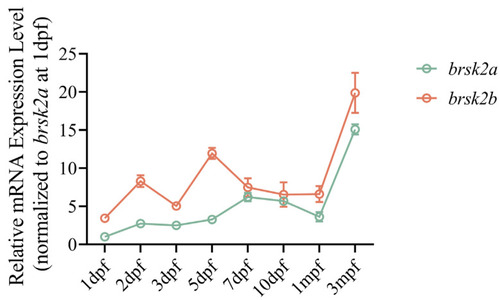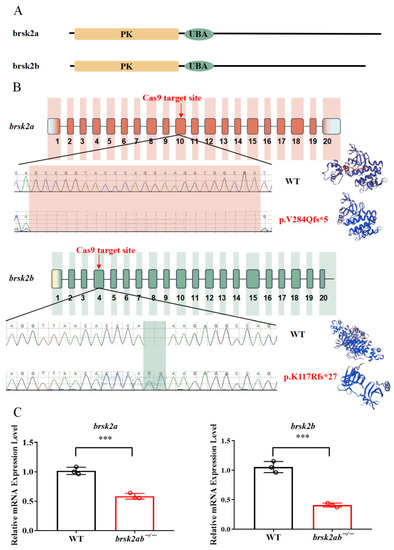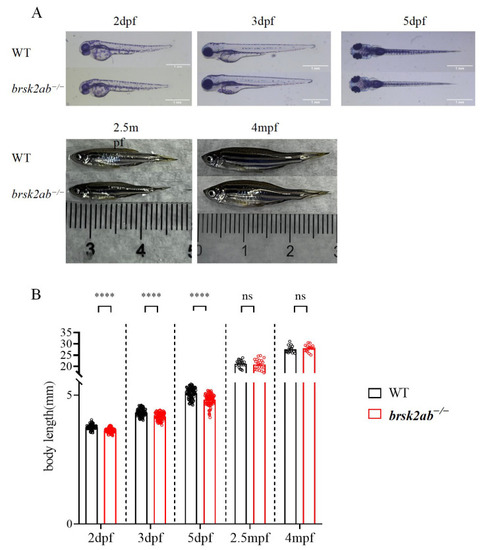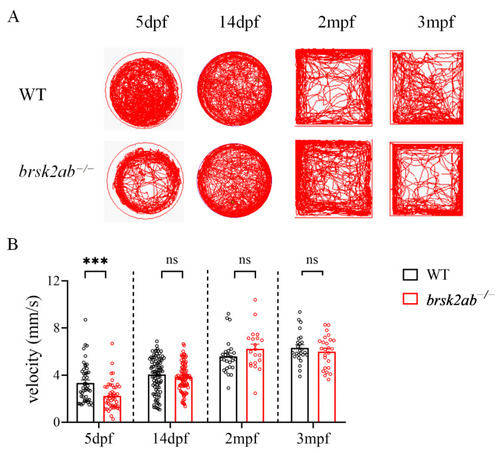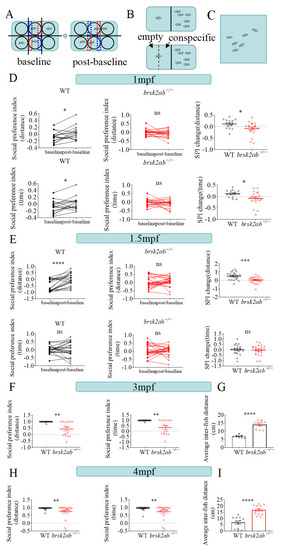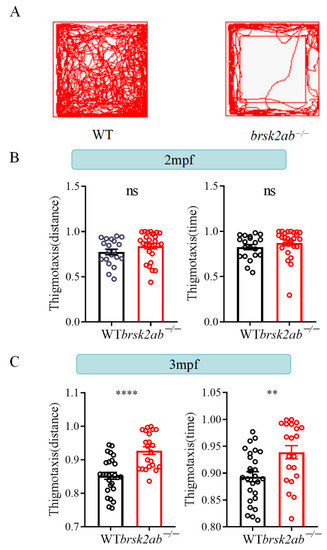- Title
-
Dynamic Regulation of brsk2 in the Social and Motor Development of Zebrafish: A Developmental Behavior Analysis
- Authors
- Deng, J., Liu, C., Hu, M., Hu, C., Lin, J., Li, Q., Xu, X.
- Source
- Full text @ Int. J. Mol. Sci.
|
Temporal pattern of mRNA expression of zebrafish |
|
Generation of |
|
|
|
The locomotor activity of |
|
PHENOTYPE:
|
|
PHENOTYPE:
|

